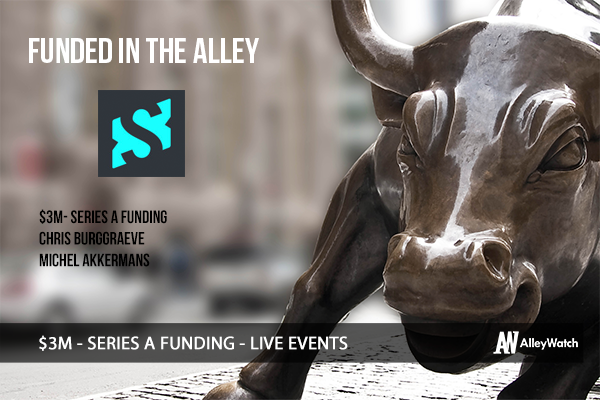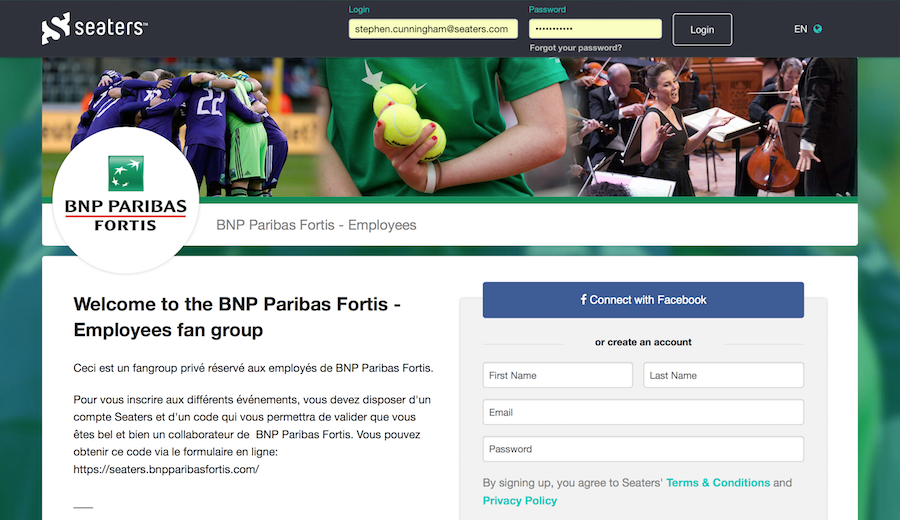How many times have you found a great concert or game to attend, only to find out that the event was sold out? While this has happened countless times, what you may not know is that live events are never truly sold out, and Seaters exists so that you can claim those open seats. With years of experience working in global events, the Seaters team is dedicated to making sure you get a seat, which benefits you, the organizers and the teams.
AlleyWatch chatted with COO Shawn Canter about the startup and how they raised their third round of funding.
Who were your investors and how much did you raise?
Seaters anticipates closing on its Series A preferred equity round in March 2017. We anticipate closing the round with $3M in fresh capital. Participants include existing investors and new investors to the Seaters family.
Tell us about your product or service.
Seaters is an international, award winning, company in the business of driving greater revenue, activating direct one-to-one brand/consumer relations, increasing brand value for sport and live event sponsors and organizers while reducing waste of assets.
Seaters has won:
- 2014 World Wide Investor Network Global Innovator Award (US)
- 2015 Sport Numericus Startup of the Year Award (France)
- 2016 Sporsora Digital Innovation Award (France) – this award is the Oscars of Sports Marketing. Other winners include ACCOR, Le Tour de France, Adidas, BNP Paribas ‘We Are Tennis’
- We work with brands like Coca-Cola, KPMG and BNP Paribas to name a few.
What inspired you to start the company?
Jean has spent his entire career in sports marketing, ticketing, and VIP experiences for global events like the Winter and Summer Olympics, FIFA World Cup, French Open Roland Garros, Tour de France, etc. He saw first-hand that at even the most sought after, high profile events, there are always empty seats. He founded Seaters on the mantra, “No More Empty Seats!” Then, we came up with a business model that is a “Win! Win! Win!” for each constituent (sponsors, organizers and fans) to accomplish that mission.
How is it different?
We realized the key to solving this problem using a technology platform to scale across sports, events, teams, sponsors, geographies is to aggregate demand in advance. Since many ticketholders do not end up attending the game or concert, even having a “sold out” event does not guarantee a “full house”. By aggregating qualified demand in advance, Seaters helps ensure a full house – even to sold out events. Looking for demand last minute puts them at risk of not finding the sought-after demand and could inflict reputational and price integrity damage by giving the appearance of “dumping” seats.
By doing this, not only do we satisfy sponsors, we build deeper more intimate relationships with their fans. Regarding teams/venues – empty seats don’t park, eat, drink, buy merchandise and cheer. Full seats do! Additionally we help fans feel more connected to the sponsor who provided an opportunity and possible experience that would otherwise not have been available.
We have great case studies on how effective this is in pricing models and thus real revenue creation.
Additionally, we complement other ticketing services (primary and secondary sales and inventory management). We do not compete with them, our competition is a pen and paper or excel spreadsheet and someone trying to offer tickets last minute without any scarcity value, knowledge of demand, or data analytics
What market are you targeting and how big is it?
Because we aggregate “first minute” demand for “last minute” distribution of time sensitive perishable assets, we have several verticals we can attack. The first is Seaters LIVE (live sport events, concerts, etc.).
Based on Independent studies, management estimates the value of unused tickets alone per year is approximately $35B.
Our next vertical is corporate learning, seminars, etc. We anticipate a trial project first half of 2017.
What’s your business model?
We make revenue three ways: first, we make money per transaction (per ticket moved), secondly, we offer monthly access fees (usually in 1 yr. contract increments). Implementation and service fees also contribute to the mix.
How many seats are actually empty per game?
According to a study by Invite Manager based on 2012 data, “43% of all tickets owned by businesses go unused.” Even a small percent may seem low but in stadiums of 100,000 seats that translate into 3,000 empty seats – 3,000 fans not seeing their favorite time live!
That’s the beauty of our business – they all have loads of unused seats (and all over the world). It is in everyone’s best interest to fill those seats – no one loses/everyone gains. That’s what Seaters does.
What was the funding process like?
We are fortunate to have a supportive group of strategic investors. Key investors have both entrepreneurial and marketing/sponsorship experience. They see the vision and are supportive
In this round, we introduced a new investor into the Seaters family. A great family office that will provide important strategic connections in a very relevant growing geography
What are the biggest challenges that you faced while raising capital?
The biggest challenge was to both get the capital raise done and stay focused on the business.
What factors about your business led your investors to write the check?
Team, size of opportunity, initial customers and unique approach to a universal problem.
What are the milestones you plan to achieve in the next six months?
Really ramp the number of customers in both the US and Europe.
All our existing customers have followed a similar pattern. Start with a relatively small test and ramp up.
We know, broader reach (sales resources) and scalability (technical resources) are our key areas of capital allocation.
What advice can you offer companies in New York that do not have a fresh injection of capital in the bank?
Draw straight lines. Don’t overcomplicate. Always ask yourself if you are drawing the straightest (most simple) line from “here to there.” Complication is messy, distracting and expensive.
Where do you see the company going now over the near term?
As noted above, ramp up customers and within each customer, breadth of activity
For each sponsor, for example, we can help them:
Activate employee engagement, customer loyalty, promote brand awareness and drive over 100% ROI from sponsorships by aggregating demand greater than their original ticket allocation so the brand can go back to the event organizer and get even more tickets.





